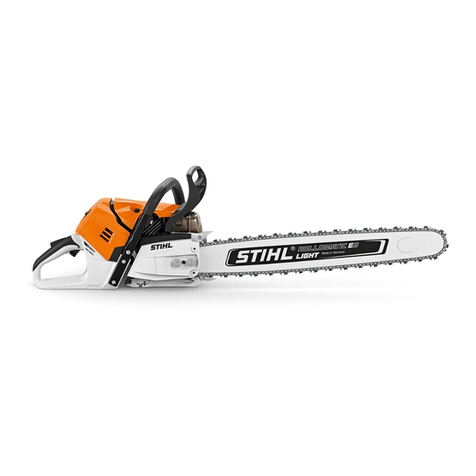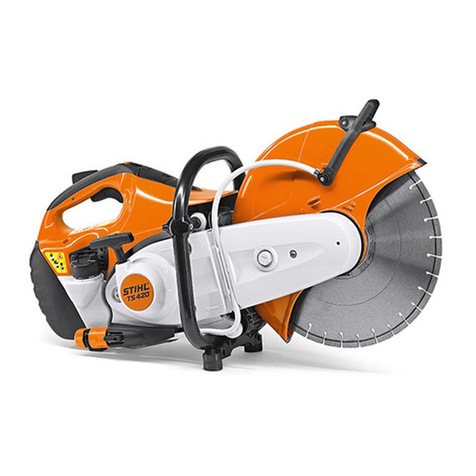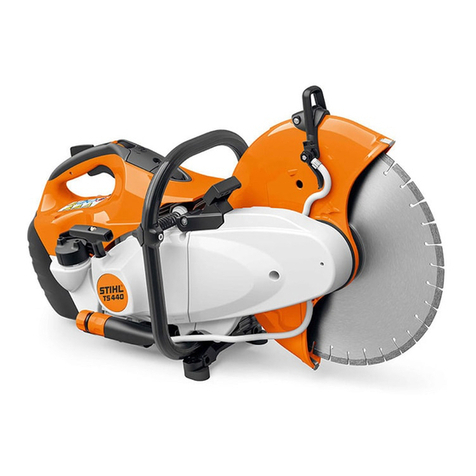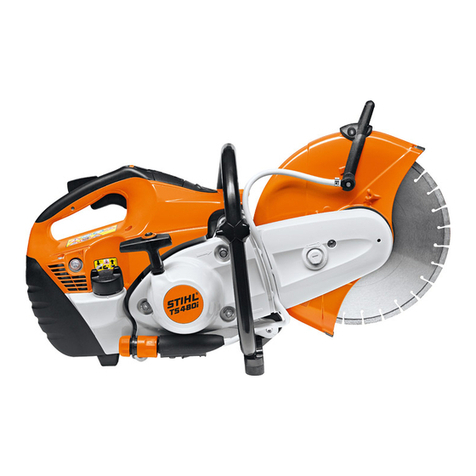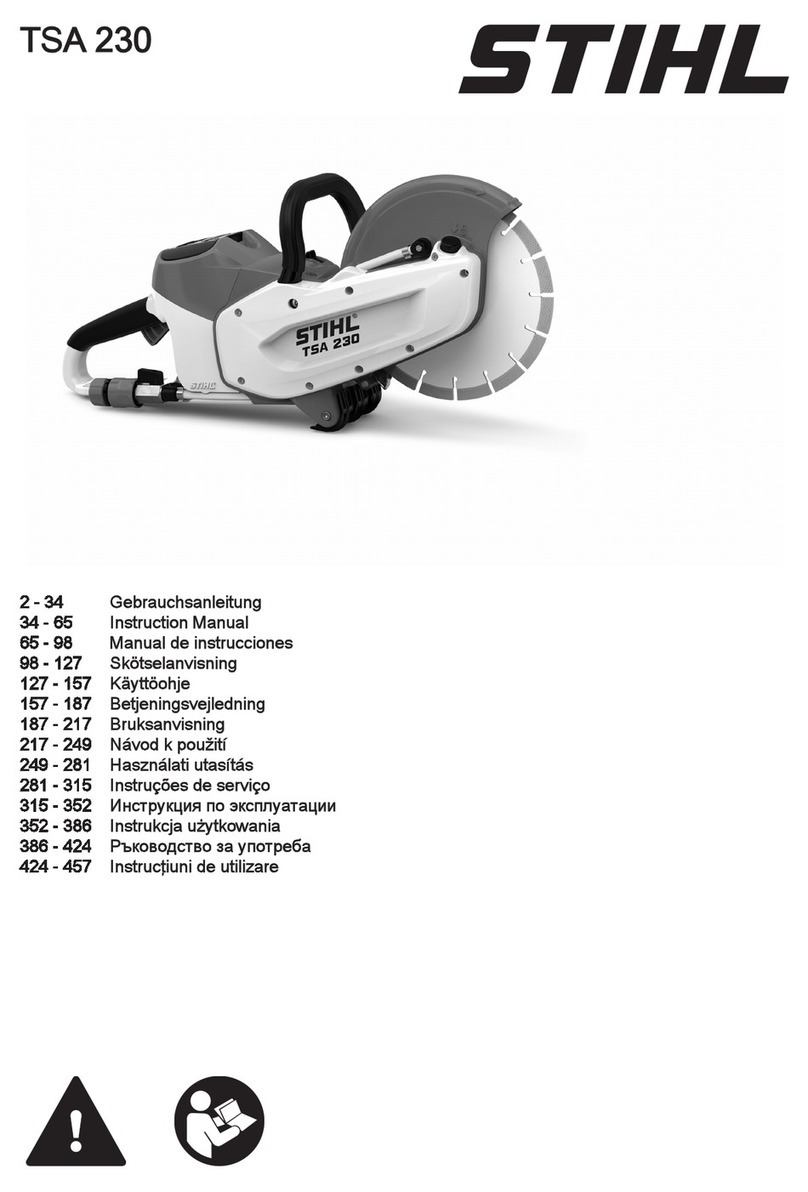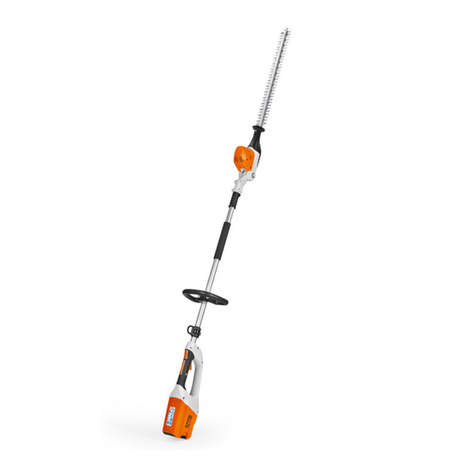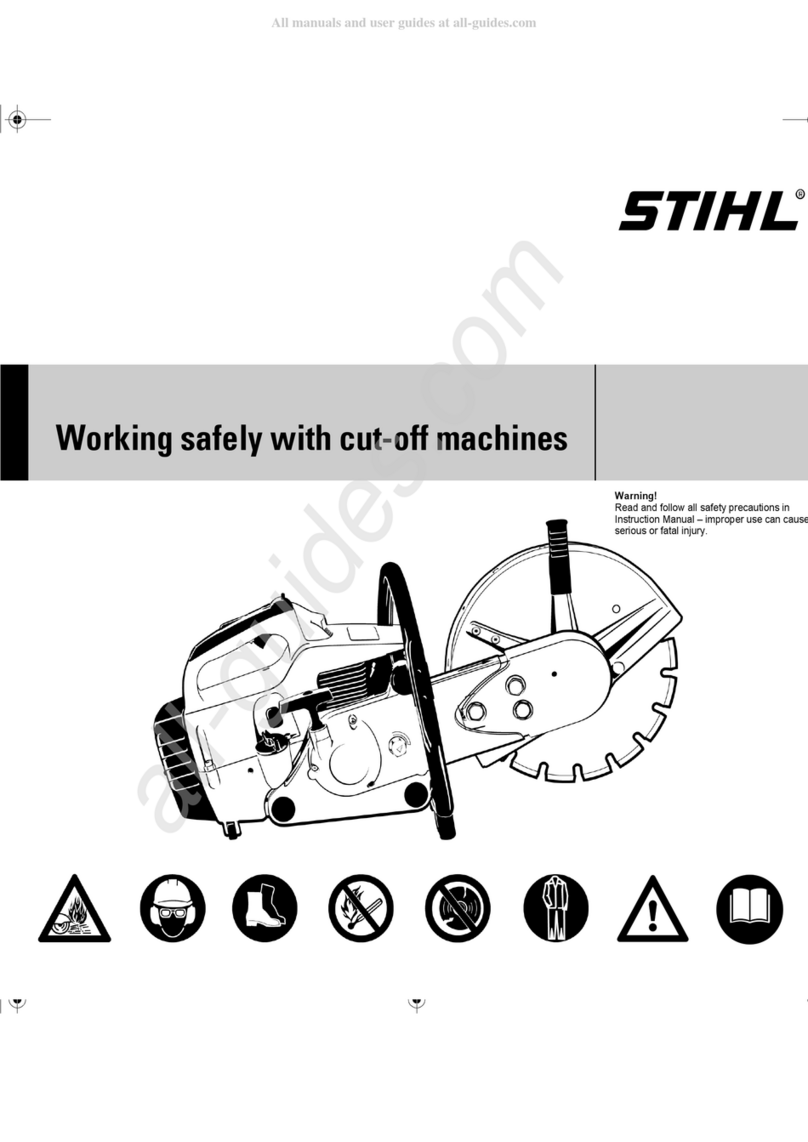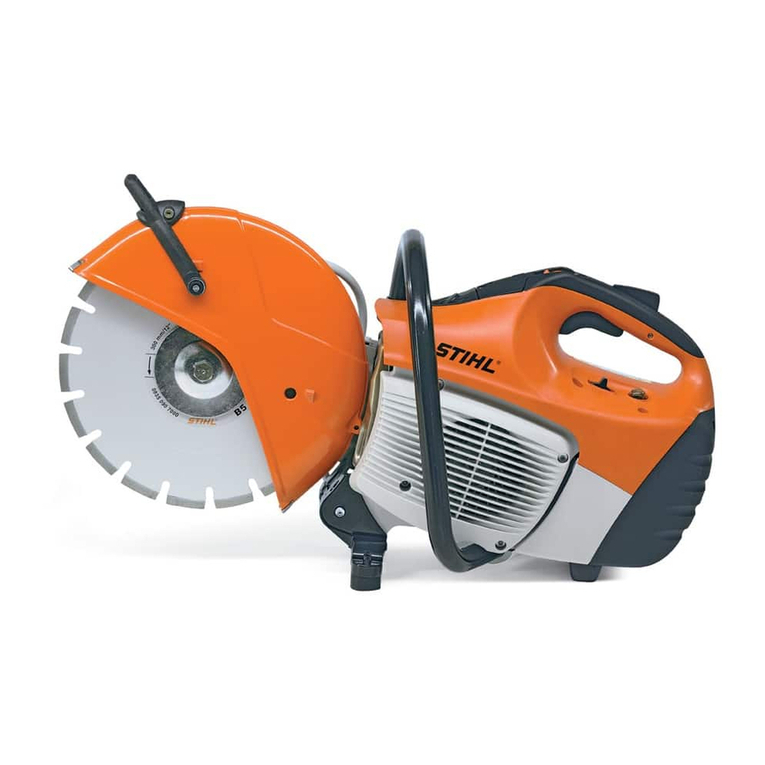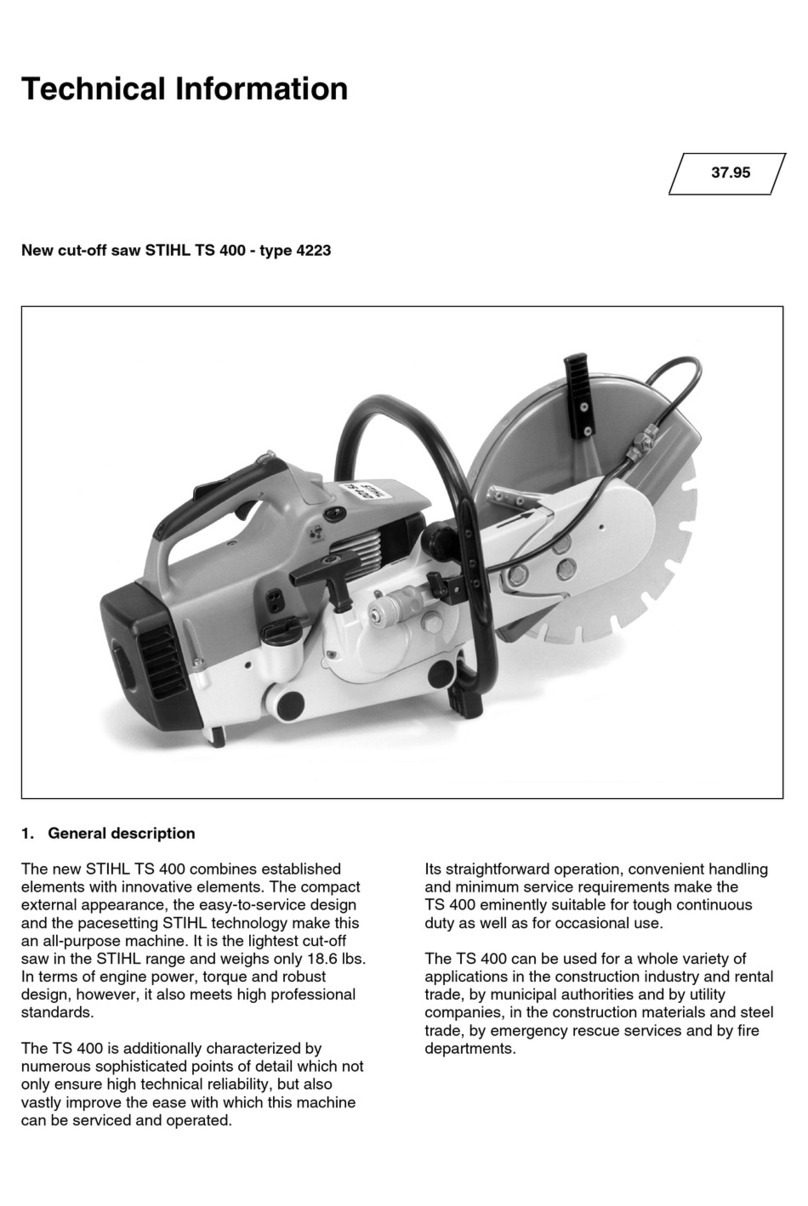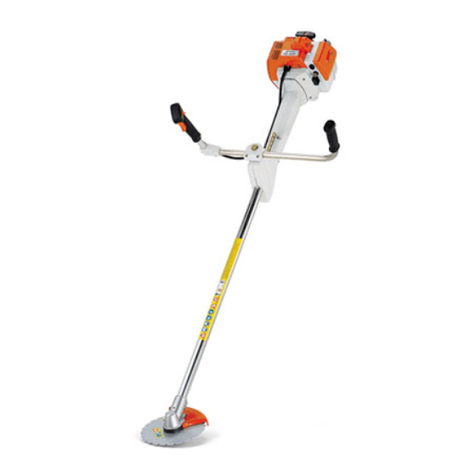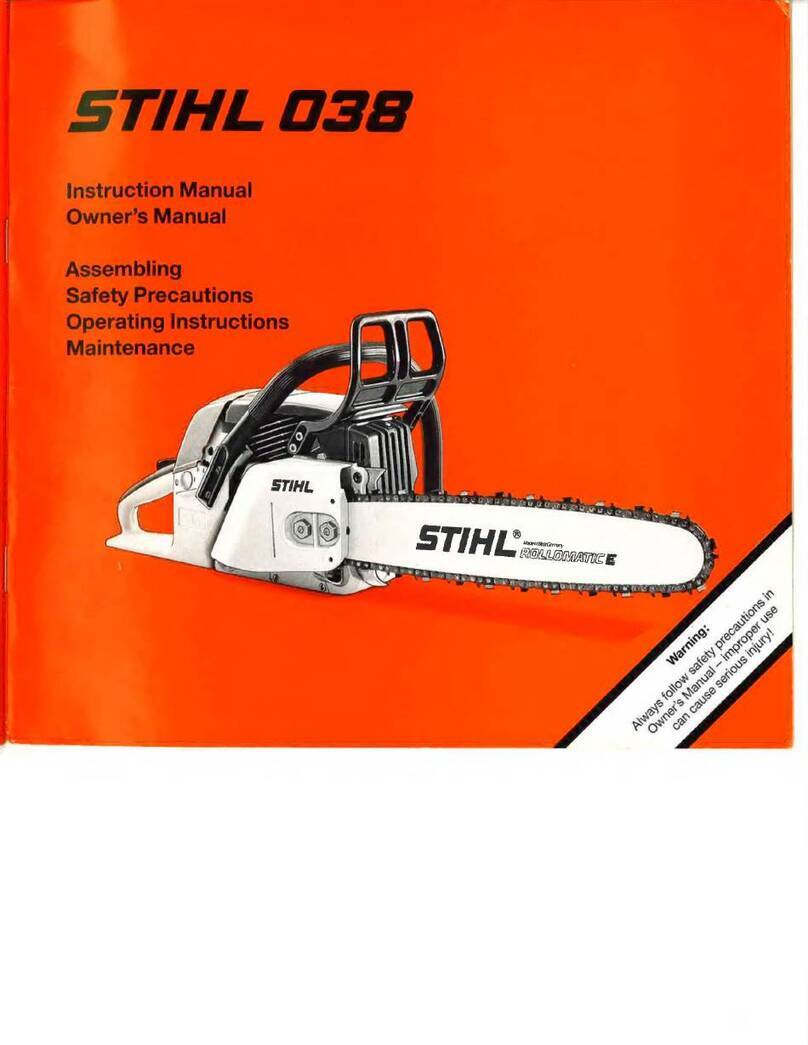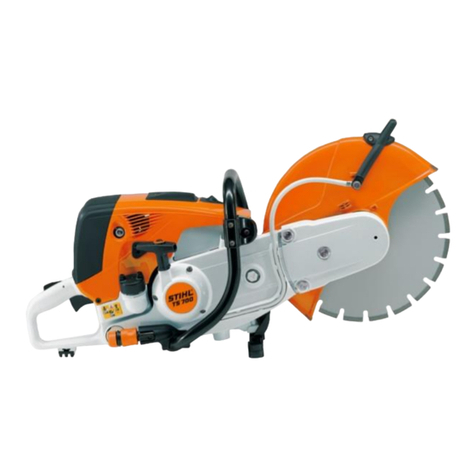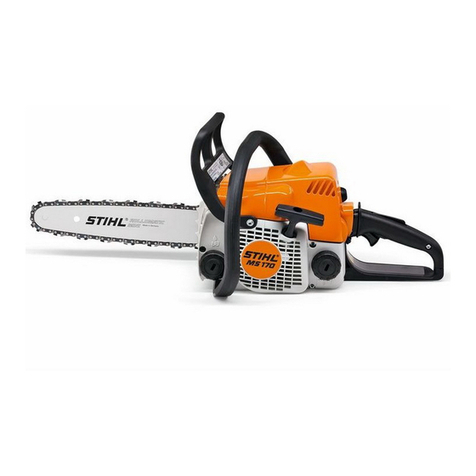
Children, animals and bystanders must not be
allowed near the machine.
When not using the machine, it must be laid
down in such a way that it does not endanger
anyone. Ensure that the machine cannot be
used without authorization.
The user is responsible for accidents or risks
involving third parties or their property.
Do not lend or rent your power tool without the
User Manual. Be sure that anyone using it under‐
stands the information contained in this manual.
The use of machines that emit noise may be limi‐
ted to certain hours of the day as specified by
national and/or regional or local regulations.
Anyone operating the machine must be well res‐
ted, in good physical health and in good mental
condition.
If you have any condition that might be aggrava‐
ted by strenuous work, check with your doctor
before operating a machine.
If you have a pacemaker: The ignition system of
your machine produces an electromagnetic field
of very low intensity. This field may interfere with
some pacemakers. STIHL recommends that per‐
sons with pacemakers consult their physician
and the pacemaker manufacturer to reduce any
health risk.
Anyone who has consumed alcohol or drugs or
medicines affecting their ability to react must not
operate a power tool.
Postpone the work if the weather is bad (snow,
ice, wind) – higher risk of accidents!
The machine may only be used for cutting. It is
not suitable for cutting wood or wooden objects.
Asbestos dust is extremely toxic - the machine
must therefore never be used to cut asbestos!
Other uses are not permitted and may lead to
accidents or damage to the machine.
Never attempt to modify your power tool in any
way since this may increase the risk of personal
injury. STIHL excludes all liability for personal
injury and damage to property caused while
using unauthorized attachments.
Only use abrasive wheels or accessories which
have been approved by STIHL for this machine
or which are technically equivalent. If you have
any questions in this respect, consult your
dealer. Only use high-quality abrasive wheels
and attachments. in order to avoid the risk of
accidents and damage to the machine.
STIHL recommends the use of genuine STIHL
abrasive wheels and accessories. They are spe‐
cifically designed to match the product and meet
your performance requirements.
Do not use a high-pressure washer to clean the
power tool. The solid jet of water may damage
parts of the unit.
Do not spray the power tool with water.
Never use circular saw blades, car‐
bide, rescue or wood cutting attach‐
ments or saws of any kind – these
may cause fatal injuries!Instead of
uniformly removing particles as when
cutting with an abrasive wheel, the
teeth of a circular saw blade may
snag in the material. This causes the
machine to react in a highly aggres‐
sive manner with uncontrolled and
extremely dangerous kickback.
2.1 Clothing and equipment
Wear proper protective clothing and equipment.
Clothing must be sturdy but allow
complete freedom of movement.
Wear close-fitting clothes such as a
boiler suit, not a work coat.
When cutting steel, always wear clothing made
of barely flammable material (e.g., leather or cot‐
ton with flame-retardant finish) – no man made
fibers – risk of fire due to flying sparks!
Clothing must be free from flammable deposits
(chips, fuel, oil, etc.).
Do not wear clothes that may be caught by mov‐
ing parts – no scarf, no tie, no jewelry. Tie up and
confine long hair above your shoulders.
Wear steel-toed safety boots with
non-slip soles.
WARNING
To reduce the risk of eye injuries,
wear close-fitting safety glasses in
accordance with European Standard
EN 166. Make sure the safety
glasses are a snug fit.
Wear a safety hard hat where there is a danger
of head injuries from falling objects.
Dust (e. g., crystalline material from the object
being cut), fumes and smoke may be produced
while cutting - health hazard!
2 Safety Precautions and Working Techniques English
0458-370-8321-C 3

